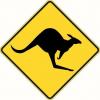This is probably a blatant newbie question, but what the heck
I've been gifted a couple marking knives over the last few years... one a Lee Valley double-bevel spear point knife, and the other a Narex. Neither seem particular sharp to begin with, and have been kind of a PITA to sharpen after the fact (what can I say, I suck at free-hand sharpening).
I've watched a few videos (Paul Sellars, Matt Estlea) and noted the knives they were using seemed to be relatively simple craft knives with disposable blades - awesome! Except those particular models are a bit harder to come by here stateside
Out of frustration the other day when I was practicing some cuts in the shop, I grabbed a folding utility knife that I'd picked up on a whim at the box store some time back. With a fresh blade, and being a little more skinny up front than most utility knives, it felt great and more importantly, for the first time I actually felt like I was really slicing a line across the fibers without having to bear down on the tool.
Which got me wondering... is there a reason *not* to use a utility or craft knife for marking lines? Something I'm missing here, besides being razor sharp all the time, easy to make sharp again (pitch the old blade and install a new one), and generally cheaper than anything short of a home-made marking knife?






 Reply With Quote
Reply With Quote





